Introduction
In the world of data science, Kaggle has become a vibrant arena where aspiring analysts and seasoned professionals alike come to test their skills and push the boundaries of innovation. Picture this: a young data enthusiast, captivated by the thrill of competition, dives into a Kaggle challenge with little more than a curious mind and a determination to learn. As they navigate the complexities of machine learning, they discover not only the nuances of data manipulation and feature engineering but also a supportive community that thrives on collaboration and shared knowledge. This session will explore powerful strategies, techniques, and insights that can transform your approach to Kaggle competitions, helping you turn that initial curiosity into success.
This article is based on a recent talk given by Nischay Dhankhar on Mastering Kaggle Competitions – Strategies, Techniques, and Insights for Success , in the DataHack Summit 2024.
Learning Outcomes
- Understand the fundamental strategies for succeeding in Kaggle competitions.
- Learn the importance of exploratory data analysis (EDA) and how to leverage public notebooks for insights.
- Discover effective techniques for data splitting and model building.
- Explore case studies of winning solutions across various domains, including tabular data and computer vision.
- Recognize the value of teamwork and resilience in the competitive landscape of data science.
Introduction to Kaggle
Kaggle has become the premier destination for data science with participants ranging from novices to professionals. Essentially speaking, Kaggle is a platform that can be used to learn and develop data science abilities via challenges. They compete in challenge solving, which entails solving real life industry project like scenarios that come in very handy. This platform allows the users to share ideas, methods, and methods so that all the members get to learn from each other.
Kaggle also acts as a link to several job offers for data scientists out there. In fact, Kaggle competitions are known by many employers who acknowledge the skills as well as the practical experience honed via competitions as an advantage in resume. Also, Kaggle allows users or participants to utilize resources from cloud computing such as CPU and GPU where notebook with machine learning models can be tested without owning a huge computer.

Prerequisites for Kaggle Competitions
While there are no strict prerequisites for entering Kaggle competitions, certain qualities can significantly enhance the experience:
- Eagerness to Learn: Open-mindedness in respect to the new ideas and approaches is hence instrumental in this fast-growing field of study.
- Collaborative Behavior: Involving the third party or other people of the community can bring greater understanding and resultant enhanced performance.
- Basic Math Skills: Some prior knowledge about mathematics, especially in the field of statistic and probability, can be useful when grasping the data science concepts.
Why Kaggle?
Let us now look into the reasons as to why Kaggle is ideal choice for all.
Learning and Improving Data Science Skills
It offers hands-on experience with real-world datasets, enabling users to enhance their data analysis and machine learning skills through competitions and tutorials.
Collaborative Community
Kaggle fosters a collaborative environment where participants share insights and strategies, promoting learning and growth through community engagement.
Career Opportunities
Having a strong Kaggle profile can boost career prospects, as many employers value practical experience gained through competitions.
Notebooks Offering CPUs/GPUs
Kaggle provides free access to powerful computing resources, allowing users to run complex models without financial barriers, making it an accessible platform for aspiring data scientists.
Deep Dive into Kaggle Competitions
Kaggle competitions are a cornerstone of the platform, attracting participants from various backgrounds to tackle challenging data science problems. These competitions span a wide array of domains, each offering unique opportunities for learning and innovation.
Popular Domains
- Computer Vision: Some of these tasks are for example; image segmentation, object detection, classification/regression where participants build models to understand the image data.
- Natural Language Processing (NLP): Like in the case of computer vision, NLP competitions encompass classification and regression in which data given is in text format.
- Recommendation Systems: These competition tasks people to develop recommendation systems whereby the user is offered products or content to purchase or download.
- Tabular Competitions: People deal with fixed data sets and forecast the outcome – typically, this is accomplished by employing several sets of algorithms known as machine-learning algorithms.
- Time Series: This means that it involves assumptions of future data starting with the existing figures.
- Reinforcement Learning: Challenges in this category enable participants to design algorithms that require learning on how to make decisions autonomously.
- Medical Imaging: These competitions are centered on identifying medical images in order to help in making diagnoses and planning treatment.
- Signals Based Data: This includes the tasks pertaining to audio and video classification, where participants identify as well as try to understand the data in the signal.
Types of Competitions
Kaggle hosts various types of competitions, each with its own set of rules and limitations.
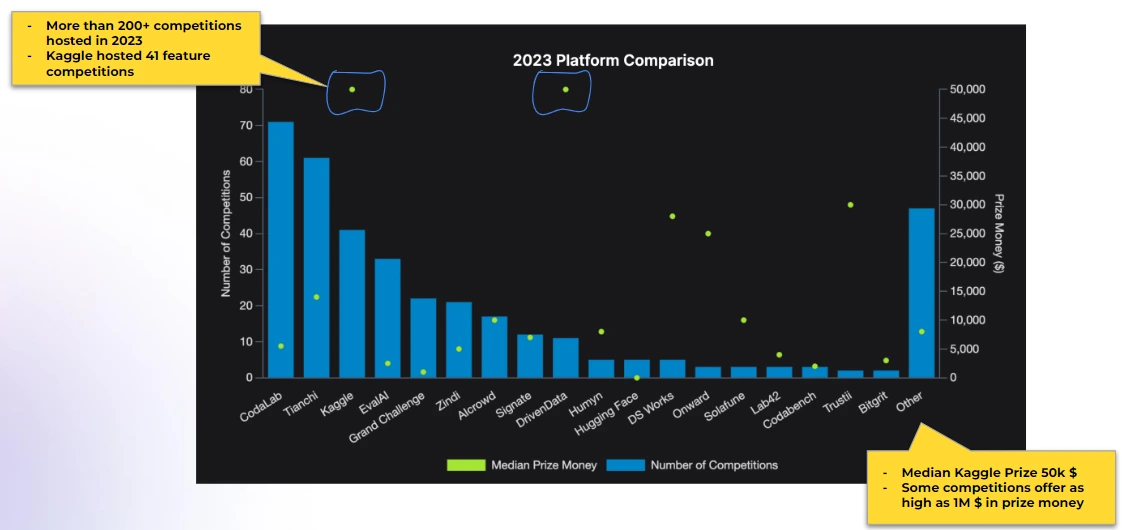
- CSV Competitions: Standard competitions where participants submit CSV files with predictions.
- Restricted Notebooks: Competitions that limit access to certain resources or code.
- Only Competitions: Focused entirely on the competitive aspect, without supplementary materials.
- Limited to GPU/CPU: Some competitions restrict the type of processing units participants can use, which can impact model performance.
- x Hours Inference Limit: Time constraints are imposed on how long participants can run their models for inference.
- Agent Based Competitions: These unique challenges require participants to develop agents that interact with environments, often simulating real-world scenarios.
Through these competitions, participants gain invaluable experience, refine their skills, and engage with a community of like-minded individuals, setting the stage for personal and professional growth in the field of data science.
Domain Knowledge for Kaggle
In Kaggle competitions, domain knowledge plays a crucial role in enhancing participants’ chances of success. Understanding the specific context of a problem allows competitors to make informed decisions about data processing, feature engineering, and model selection. For instance, in medical imaging, familiarity with medical terms can lead to more accurate analyses, while knowledge of financial markets can help in selecting relevant features.
This expertise not only aids in identifying unique patterns within the data but also fosters effective communication within teams, ultimately driving innovative solutions and higher-quality results. Combining technical skills with domain knowledge empowers participants to navigate competition challenges more effectively.

Approaching NLP Competitions
We will now discuss approaches of NLP competitions.
Understanding the Competition
When tackling NLP competitions on Kaggle, a structured approach is essential for success. Start by thoroughly understanding the competition and data description, as this foundational knowledge guides your strategy. Conducting exploratory data analysis (EDA) is crucial; studying existing EDA notebooks can provide valuable insights, and performing your own analysis helps you identify key patterns and potential pitfalls.
Data Preparation
Once familiar with the data, splitting it appropriately is vital for training and testing your models effectively. Establishing a baseline pipeline enables you to evaluate the performance of more complex models later on.
Model Development
For large datasets or cases where the number of tokens is small, experimenting with traditional vectorization methods combined with machine learning or recurrent neural networks (RNNs) is beneficial. However, for most scenarios, leveraging transformers can lead to superior results.
Common Architectures
- Classification/Regression: DeBERTa is highly effective.
- Small Token Length Tasks: MiniLM performs well.
- Multilingual Tasks: Use XLM-Roberta.
- Text Generation: T5 is a strong choice.
Common Frameworks
- Hugging Face Trainer for ease of use.
- PyTorch and PyTorch Lightning for flexibility and control.
LLMs For Downstream NLP Tasks
Large Language Models (LLMs) have revolutionized the landscape of natural language processing, showcasing significant advantages over traditional encoder-based models. One of the key strengths of LLMs is their ability to outperform these models, particularly when dealing with longer context lengths, making them suitable for complex tasks that require understanding broader contexts.
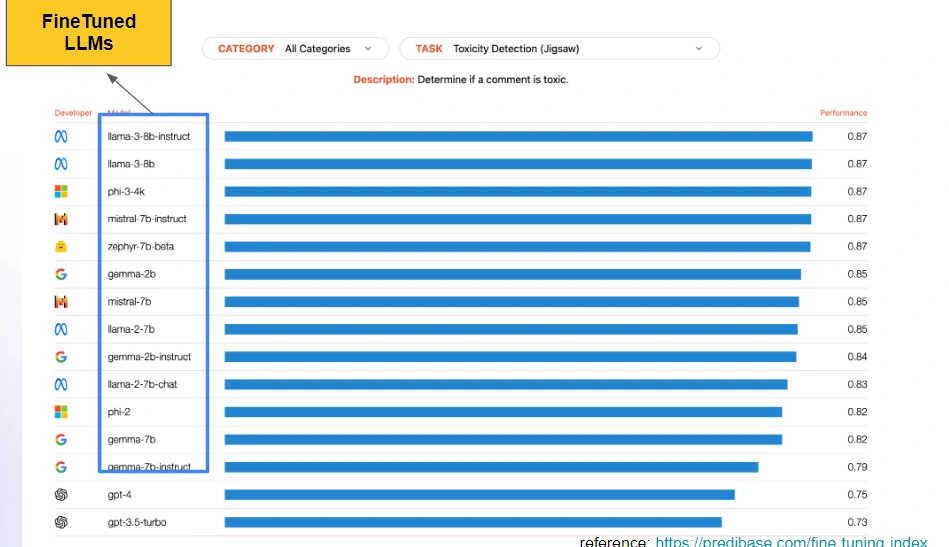
LLMs are typically pretrained on vast text corpora, allowing them to capture diverse linguistic patterns and nuances. This extensive pretraining is facilitated through techniques like causal attention masking and next-word prediction, enabling LLMs to generate coherent and contextually relevant text. However, it’s important to note that while LLMs offer impressive capabilities, they often require higher runtime during inference compared to their encoder counterparts. This trade-off between performance and efficiency is a crucial consideration when deploying LLMs for various downstream NLP tasks.
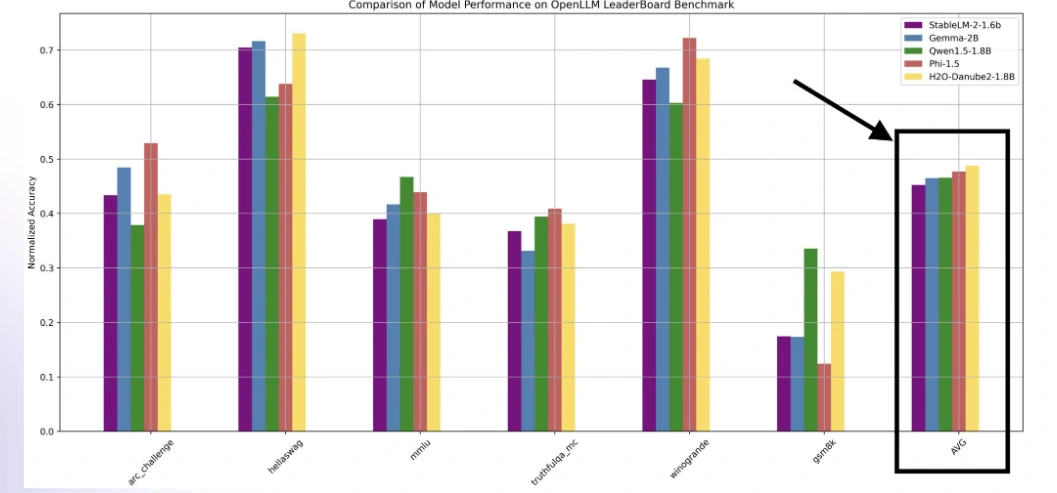
Approaching Signals Competitions
Approaching signals competitions requires a deep understanding of the data, domain-specific knowledge, and experimentation with cutting-edge techniques.
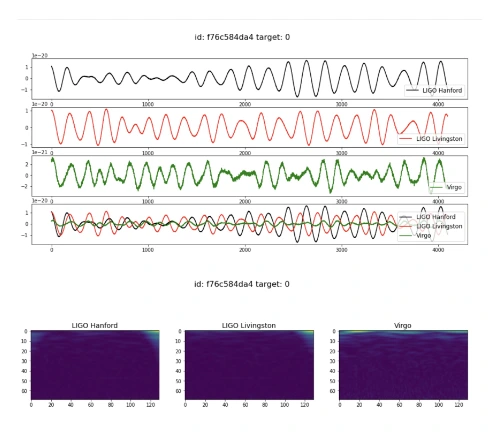
- Understand Competition & Data Description: Familiarize yourself with the competition’s goals and the specifics of the provided data.
- Study EDA Notebooks: Review exploratory data analysis (EDA) notebooks from previous competitors or conduct your own to identify patterns and insights.
- Splitting the Data: Ensure appropriate data splitting for training and validation to promote good generalization.
- Read Domain-Specific Papers: Gain insights and stay informed by reading relevant research papers related to the domain.
- Build a Baseline Pipeline: Establish a baseline model to set performance benchmarks for future improvements.
- Tune Architectures, Augmentations, & Scheduler: Optimize your model architectures, apply data augmentations, and adjust the learning scheduler for better performance.
- Try Out SOTA Methods: Experiment with state-of-the-art (SOTA) methods to explore advanced techniques that could enhance results.
- Experiment: Continuously test different approaches and strategies to find the most effective solutions.
- Ensemble Models: Implement model ensembling to combine strengths from various approaches, improving overall prediction accuracy.
HMS: 12th Place Solution
The HMS solution, which secured 12th place in the competition, showcased an innovative approach to model architecture and training efficiency:

- Model Architecture: The team utilized a 1D CNN based model, which served as a foundational layer, transitioning into a Deep 2D CNN. This hybrid approach allowed for capturing both temporal and spatial features effectively.
- Training Efficiency: By leveraging the 1D CNN, the training time was significantly reduced compared to traditional 2D CNN approaches. This efficiency was crucial in allowing for rapid iterations and testing of different model configurations.
- Parallel Convolutions: The architecture incorporated parallel convolutions, enabling the model to learn multiple features simultaneously. This strategy enhanced the model’s ability to generalize across various data patterns.
- Hybrid Architecture: The combination of 1D and 2D architectures allowed for a more robust learning process, where the strengths of both models were utilized to improve overall performance.
This strategic use of hybrid modeling and training optimizations played a key role in achieving a strong performance, demonstrating the effectiveness of innovative techniques in competitive data science challenges.
G2Net: 4th Place Solution
The G2Net solution achieved impressive results, placing 2nd on the public leaderboard and 4th on the private leaderboard. Here’s a closer look at their approach:

- Model Architecture: G2Net utilized a 1D CNN based model, which was a key innovation in their architecture. This foundational model was then developed into a Deep 2D CNN, enabling the team to capture both temporal and spatial features effectively.
- Leaderboard Performance: The single model not only performed well on the public leaderboard but also maintained its robustness on the private leaderboard, showcasing its generalization capabilities across different datasets.
- Training Efficiency: By adopting the 1D CNN model as a base, the G2Net team significantly reduced training time compared to traditional 2D CNN approaches. This efficiency allowed for quicker iterations and fine-tuning, contributing to their competitive edge.
Overall, G2Net’s strategic combination of model architecture and training optimizations led to a strong performance in the competition, highlighting the effectiveness of innovative solutions in tackling complex data challenges.
Approaching CV Competitions
Approaching CV (Computer Vision) competitions involves mastering data preprocessing, experimenting with advanced architectures, and fine-tuning models for tasks like image classification, segmentation, and object detection.
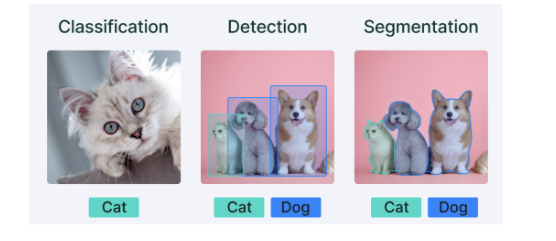
- Understand Competition and Data Description: Starting with, it is advisable to study competition guidelines as well as the descriptions of the data and scope the goals and the tasks of the competition.
- Study EDA Notebooks: Posting the EDA notebooks of others and look for patterns, features as well as possible risks in the data.
- Data Preprocessing: Since within modeling, certain manipulations can already be done, in this step, the images have to be normalized, resized, and even augmented.
- Build a Baseline Model: Deploy a no-frills model of benchmark so that you will have a point of comparison for building subsequent enhancements.
- Experiment with Architectures: Test various computer vision architectures, including convolutional neural networks (CNNs) and pre-trained models, to find the best fit for your task.
- Utilize Data Augmentation: Apply data augmentation techniques to expand your training dataset, helping your model generalize better to unseen data.
- Hyperparameter Tuning: Fine-tune hyperparameters using strategies like grid search or random search to enhance model performance.
- Ensemble Methods: Experiment with ensemble techniques, combining predictions from multiple models to boost overall accuracy and robustness.
Common Architectures
| Task | Common Architectures |
|---|---|
| Image Classification / Regression | CNN-based: EfficientNet, ResNet, ConvNext |
| Object Detection | YOLO Series, Faster R-CNN, RetinaNet |
| Image Segmentation | CNN/Transformers-based encoder-decoder architectures: UNet, PSPNet, FPN, DeeplabV3 |
| Transformer-based Models | ViT (Vision Transformer), Swin Transformer, ConvNext (hybrid approaches) |
| Decoder Architectures | Popular decoders: UNet, PSPNet, FPN (Feature Pyramid Network) |
RSNA 2023 1st Place Solution
The RSNA 2023 competition showcased groundbreaking advancements in medical imaging, culminating in a remarkable first-place solution. Here are the key highlights:

- Model Architecture: The winning solution employed a hybrid approach, combining convolutional neural networks (CNNs) with transformers. This integration allowed the model to effectively capture both local features and long-range dependencies in the data, enhancing overall performance.
- Data Handling: The team implemented sophisticated data augmentation techniques to artificially increase the size of their training dataset. This strategy not only improved model robustness but also helped mitigate overfitting, a common challenge in medical imaging competitions.
- Inference Techniques: They adopted advanced inference strategies, utilizing techniques such as ensemble learning. By aggregating predictions from multiple models, the team achieved higher accuracy and stability in their final outputs.
- Performance Metrics: The solution demonstrated exceptional performance across various metrics, securing the top position on both public and private leaderboards. This success underscored the effectiveness of their approach in accurately diagnosing medical conditions from imaging data.
- Community Engagement: The team actively engaged with the Kaggle community, sharing insights and methodologies through public notebooks. This collaborative spirit not only fostered knowledge sharing but also contributed to the overall advancement of techniques in the field.
Approaching Tabular Competitions
When tackling tabular competitions on platforms like Kaggle, a strategic approach is essential to maximize your chances of success. Here’s a structured way to approach these competitions:
- Understand Competition & Data Description: Start by thoroughly reading the competition details and data descriptions. Understand the problem you’re solving, the evaluation metrics, and any specific requirements set by the organizers.
- Study EDA Notebooks: Review exploratory data analysis (EDA) notebooks shared by other competitors. These resources can provide insights into data patterns, feature distributions, and potential anomalies. Conduct your own EDA to validate findings and uncover additional insights.
- Splitting the Data: Properly split your dataset into training and validation sets. This step is crucial for assessing your model’s performance and preventing overfitting. Consider using stratified sampling if the target variable is imbalanced.
- Build a Comparison Notebook: Create a comparison notebook where you implement various modeling approaches. Compare neural networks (NN), gradient boosting decision trees (GBDTs), rule-based solutions, and traditional machine learning methods. This will help you identify which models perform best on your data.
- Continue with Multiple Approaches: Experiment with at least two different modeling approaches. This diversification allows you to leverage the strengths of different algorithms and increases the likelihood of finding an optimal solution.
- Extensive Feature Engineering: Invest time in feature engineering, as this can significantly impact model performance. Explore techniques like encoding categorical variables, creating interaction features, and deriving new features from existing data.
- Experiment: Continuously experiment with different model parameters and architectures. Utilize cross-validation to ensure that your findings are robust and not just artifacts of a specific data split.
- Ensemble / Multi-Level Stacking: Finally, consider implementing ensemble techniques or multi-level stacking. By combining predictions from multiple models, you can often achieve better accuracy than any single model alone.
MoA Competition 1st Place Solution
The MoA (Mechanism of Action) competition’s first-place solution showcased a powerful combination of advanced modeling techniques and thorough feature engineering. The team adopted an ensemble approach, integrating various algorithms to effectively capture complex patterns in the data. A critical aspect of their success was the extensive feature engineering process, where they derived numerous features from the raw data and incorporated relevant biological insights, enhancing the model’s predictive power.

Additionally, meticulous data preprocessing ensured that the large dataset was clean and primed for analysis. To validate their model’s performance, the team employed rigorous cross-validation techniques, minimizing the risk of overfitting. Continuous collaboration among team members allowed for iterative improvements, ultimately leading to a highly competitive solution that stood out in the competition.
Approaching RL Competitions
When tackling reinforcement learning (RL) competitions, several effective strategies can significantly enhance your chances of success. A common approach is using heuristics-based methods, which provide quick, rule-of-thumb solutions to decision-making problems. These methods can be particularly useful for generating baseline models.
Deep Reinforcement Learning (DRL) is another popular technique, leveraging neural networks to approximate the value functions or policies in complex environments. This approach can capture intricate patterns in data, making it suitable for challenging RL tasks.
Imitation Learning, which combines deep learning (DL) and machine learning (ML), is also valuable. By training models to mimic expert behavior from demonstration data, participants can effectively learn optimal strategies without exhaustive exploration.
Lastly, a Bayesian approach can be beneficial, as it allows for uncertainty quantification and adaptive learning in dynamic environments. By incorporating prior knowledge and continuously updating beliefs based on new data, this method can lead to robust solutions in RL competitions.
Best Strategy to Teamup
Team collaboration can significantly enhance your performance in Kaggle competitions. A key strategy is to assemble a diverse group of individuals, each bringing unique skills and perspectives. This diversity can cover areas such as data analysis, feature engineering, and model building, allowing for a more comprehensive approach to problem-solving.
Effective communication is crucial; teams should establish clear roles and responsibilities while encouraging open dialogue. Regular meetings can help track progress, share insights, and refine strategies. Leveraging version control tools for code collaboration ensures that everyone stays on the same page and minimizes conflicts.
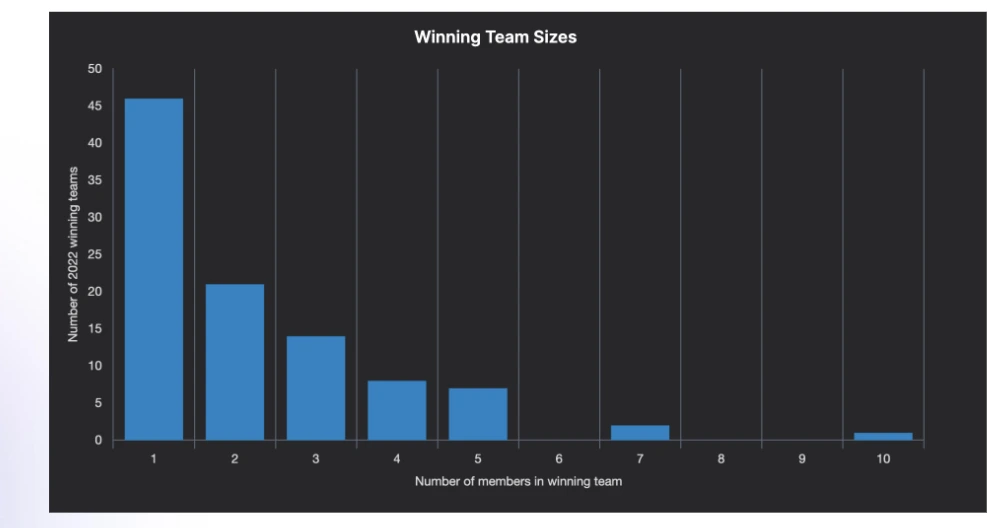
Additionally, fostering a culture of learning and experimentation within the team is vital. Encouraging members to share their successes and failures promotes a growth mindset, enabling the team to adapt and improve continuously. By strategically combining individual strengths and maintaining a collaborative environment, teams can significantly boost their chances of success in competitions.
Conclusion
Succeeding in Kaggle competitions requires a multifaceted approach that blends technical skills, strategic collaboration, and a commitment to continuous learning. By understanding the intricacies of various domains—be it computer vision, NLP, or tabular data—participants can effectively leverage their strengths and build robust models. Emphasizing teamwork not only enhances the quality of solutions but also fosters a supportive environment where diverse ideas can flourish. As competitors navigate the challenges of data science, embracing these strategies will pave the way for innovative solutions and greater success in their endeavors.
Frequently Asked Questions
A. Kaggle is the world’s largest data science platform and community, where data enthusiasts can compete in competitions, share code, and learn from each other.
A. No specific coding or mathematics knowledge is required, but a willingness to learn and experiment is essential.
A. Popular domains include Computer Vision, Natural Language Processing (NLP), Tabular Data, Time Series, and Reinforcement Learning.
A. Engaging in thorough exploratory data analysis (EDA), experimenting with various models, and collaborating with others can enhance your chances of success.
A. Common architectures include CNNs (like EfficientNet and ResNet), YOLO for object detection, and transformer-based models like ViT and Swin for segmentation tasks.







